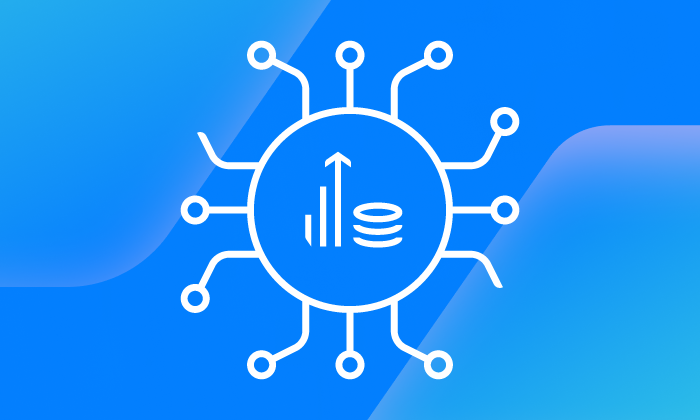Generative AI and document intelligence offer immense potential for financial services companies – most notably for operations teams.
Generative artificial intelligence (AI) offers immense potential for financial services companies. Financial institutions are heading full steam ahead into the new era of generative AI (GenAI) giving their teams the mandate to "do more AI!" — often with generous budgets attached.
In the previous age of AI, when it was still known as machine learning (ML), front offices proved the value AI can bring to financial institutions: They focused on revenue-generating use cases and training specialist models – often at high costs and with specialist skills. But it was worth it for the use cases!
In the new age of GenAI, we have generalist models that are suitable for a large variety of text manipulation and extraction tasks. We just need to adapt them to specific use cases. This opens up a huge opportunity across financial institutions – most notably for operations teams who struggled to acquire the specialist skill set required of the previous era.
To make the most of this opportunity, the playbook that has worked well in the previous ML era requires a few tweaks. The good news: these are tweaks familiar from digital transformation projects in the last ten years.
There are three steps to make the most out of investments in GenAI and its sibling, new, general-purpose document intelligence models.
Step 1: Select the right use cases
The rapid rise of generative AI has made large language models (LLMs), such as OpenAI’s GPT-4 and JPMorgan’s DocLLM, widely available.
Need to understand customer emails? Analyze contracts or other complex documents? Check that a company financial doesn't break a covenant? Generative AI can do that for you — incredibly efficiently. Seemingly overnight, non-technical users have access to powerful models that allow them to wield their knowledge and experience to solve many difficult middle- and back-office use cases.
Generative AI is brilliant at indexing or classifying documents, analyzing the intent of emails or paragraphs, and finding key information in contracts. Even some smaller tasks such as normalizing date fields or cleaning up addresses are very simple for GenAI
Step 2: Rapidly iterate on use cases
With generalist models, you don't need an army to tag and train the model or a degree in data science to experiment with it. In a similar way, hyperscalers have made it easy and cheap to procure highly specialized document intelligence capabilities that require little or no model training – e.g., Microsoft’s Azure Doc Intelligence.
As a result, the barrier to adoption is lower than ever.
This represents a great opportunity: The closer you can get technology to non-technical teams, the easier it is for it to get adopted in the business process. Operations teams themselves understand their problems deeply: They know what really matters, and they also understand the details of complex business processes, policies and regulations.
Generative AI can be put into the hands of those teams and can produce results quickly, creating a quick feedback loop to make use cases work reliably.
Step 3: Focus on control
Repeatability, reliability and control are of course key for operations processes. In addition, compliance with regulation is not optional for financial services institutions.
This means that AI should be wrapped in automation, validation and workflow capabilities that go beyond simple "human in the loop" review and allow the management of business actions and outcomes.
Similarly, financial firms need to comply with rapidly evolving regulation: Regulators have published SR11-10, the EU AI Act, and other, similar regulations are forthcoming. These enforce transparency, accountability and control of the outcomes generated by AI automation, especially in cases where it can impact a trade or a real person’s life. altogether, they make it important to handle AI in a controlled, responsible manner.
Automation software closes the gap between AI and operations
Combining generative AI capabilities with automation software makes these 3 steps possible!
Automation platforms like Xceptor enable financial services teams to make the most of LLMs and document intelligence capabilities by embedding it as a user-configurable capability.
Xceptor supports a wide variety of use cases. Features such as a strong business rules engine and strong data orchestration layer mean that use cases with multiple complex sources and complex business outcomes can be easily supported.
Additionally, Xceptor empowers operations and non-technical users to iterate quickly and flexibly on AI solutions. The platform provides drag-and-drop application of classification and extraction capabilities, with options to test and visualize the outcome. Xceptor incorporates model and prompt centralized libraries so parameter configuration can be centralized and controlled and application can be simply implemented across multiple data flows.
Finally, Xceptor comes out of the box with enterprise-grade controls – including data validation, permissioning and business action control. This means every outcome can be controlled and audited. Model performance can be fed back to the user in real-time.
Getting started with generative AI in financial services
Generative AI has been a catalyst for change across the financial services sector by removing the seemingly intrinsic technical cost of building AI models. The focus now is shifting to embedding these powerful capabilities within an easy-to-use AI automation framework that lets operation teams drive the application of AI.
With platforms like Xceptor, operations teams have exceptionally powerful capabilities at their fingertips. In days and hours, they can deliver AI solutions that automate hundreds of business use cases that previously took too much time and cost to deliver and manage.
Are you ready to apply AI to your most challenging back-office use cases? Get in touch to learn more about the power of Xceptor's AI automation framework for the financial services industry.




